Red Alert or Safe Snack? Can Cats Eat Tomatoes? Vet-Reviewed Safety Facts
- 14 Apr 2025 11:03
As loving cat owners, we often observe our feline friends showing curiosity about our human foods. A bright red, juicy tomato sitting on the counter or being chopped for a salad might attract their attention, prompting the crucial question: can cats eat tomatoes? While tomatoes are a staple in human diets, lauded for their vitamins and antioxidants, their safety for cats is a complex issue that requires careful understanding. The answer isn't a simple yes or no, as different parts of the tomato plant contain varying levels of compounds that can be harmful to felines.
Cats, being obligate carnivores, have unique dietary needs and sensitivities that differ vastly from humans. Their bodies are not designed to process many plant materials effectively. This comprehensive guide, adhering to E-E-A-T standards (Experience, Expertise, Authoritativeness, Trustworthiness) and reviewed for veterinary accuracy, will delve into the specifics of tomatoes and feline safety. We will explore the difference between the ripe fruit and the toxic plant parts, the potential risks involved, symptoms of poisoning, and provide clear guidance on whether tomatoes have any place in your cat's diet.

What are Tomatoes? Understanding the Nightshade Family Member
Tomatoes (*Solanum lycopersicum*) are fruits, although often used culinarily as vegetables. They belong to the nightshade family (Solanaceae), which includes other familiar plants like potatoes, peppers, and eggplants, but also notoriously toxic plants like belladonna (deadly nightshade). Key parts of the tomato plant include:
Ripe Fruit:** The familiar red (or sometimes yellow, orange, purple) fleshy part we typically eat.
Unripe (Green) Fruit:** Tomatoes before they have fully ripened.
Leaves:** The green foliage of the plant.
Stems:** The stalks that support the leaves and fruit.
Flowers:** The blossoms from which the fruit develops.
The critical point for cat safety lies in understanding that different parts of this plant contain varying concentrations of specific chemical compounds, particularly **solanine** and **tomatine**.
Feline Biology vs. Plant Matter: The Obligate Carnivore Perspective
Before examining tomatoes specifically, it's essential to remember the foundation of feline nutrition. Cats are **obligate carnivores**. This means:
Meat is Essential:** They require nutrients found only in animal tissue to survive and thrive (e.g., taurine, arachidonic acid, pre-formed Vitamin A).
High Protein Needs:** Their metabolism is geared towards utilizing animal protein and fat for energy.
Limited Plant Digestion:** Their digestive tracts are short and lack efficient enzymes for breaking down large amounts of plant fiber or carbohydrates.
Unique Metabolism:** They have specific metabolic pathways and sensitivities, making them vulnerable to compounds easily handled by humans or even dogs.
This biological makeup means that fruits and vegetables, including tomatoes, are not a natural or necessary part of their diet and must be evaluated carefully for safety.
The Core Question: Can Cats Eat Tomatoes? The Ripe vs. Unripe Distinction
Now, let's address the central question directly. The safety of tomatoes for cats depends entirely on **which part of the plant** is considered:
Ripe Tomato Fruit (Flesh Only): Generally considered **non-toxic** to cats in **very small quantities**. The ripe, red flesh contains negligible amounts of the toxic compounds found elsewhere in the plant. However, it's still not recommended as a regular food source due to its acidity and lack of nutritional value for cats.
Green Parts (Leaves, Stems, Flowers):** These parts are **TOXIC** to cats. They contain higher concentrations of solanine and tomatine.
Unripe (Green) Tomatoes:** These also contain higher levels of solanine/tomatine than ripe fruit and are considered **TOXIC** and unsafe for cats to ingest.
Therefore, while a tiny lick of ripe tomato pulp might not cause alarm, allowing a cat to chew on the leaves, stems, or unripe fruit of a tomato plant is dangerous.
The Danger Zone: Solanine and Tomatine Toxicity
The primary concern with tomato plants and unripe fruit lies with specific glycoalkaloids:
Tomatine:** Found throughout the tomato plant, with the highest concentrations in the leaves, stems, flowers, and *unripe green* fruit. Levels decrease significantly as the fruit ripens.
Solanine:** Also present, particularly in the green parts. Solanine is more commonly associated with green potatoes (another nightshade) but contributes to the toxicity profile of tomato plants.
How These Toxins Affect Cats:
Solanine and tomatine act as natural pesticides for the plant. When ingested by cats (or other animals) in sufficient quantities, they primarily cause:
Gastrointestinal Irritation:** They irritate the lining of the digestive tract.
Neurological Effects:** In higher doses, they can potentially affect the nervous system by inhibiting acetylcholinesterase, an important enzyme for nerve function.
The concentration of these toxins is highest in the leaves and stems, followed by the unripe green fruit. Ripe red fruit contains only trace amounts, generally considered safe in moderation regarding these specific toxins.
This makes the **tomato plant toxic to cats**, much more so than the ripe fruit itself.
Ripe Tomato Flesh: A Safe Treat or Just Empty Calories?
While the ripe red flesh is largely free from dangerous levels of solanine/tomatine, it's still not an ideal food for cats:
Nutritional Value:** Offers very little that benefits an obligate carnivore. Cats cannot efficiently use plant-based Vitamin A (beta-carotene) and synthesize their own Vitamin C. The protein and fat content are negligible compared to their needs.
Acidity:** Tomatoes are acidic. This acidity can potentially irritate a cat's stomach lining, especially if they have a sensitive stomach, leading to vomiting or discomfort.
Fiber:** Contains fiber that, while potentially helpful in tiny amounts, can also cause digestive upset (diarrhea) if consumed in more than minuscule quantities, as cats aren't adapted to high plant fiber intake.
Potential Allergens:** While uncommon, some cats might have sensitivities or allergies to tomatoes.
So, while a tiny piece of ripe tomato flesh isn't poisonous from solanine/tomatine, it offers no real benefits and could still cause mild GI upset. It's essentially empty calories for a cat.
What About Cooked Tomatoes, Tomato Sauce, Ketchup, or Soup?
Human preparations involving tomatoes introduce additional, significant risks:
Plain Cooked Tomatoes:** Similar to ripe raw flesh – non-toxic in tiny amounts, but acidic and not nutritious for cats. Cooking does not destroy solanine/tomatine, so using green tomatoes remains unsafe.
Tomato Sauce, Ketchup, Soup:** These are almost always **UNSAFE** for cats. They typically contain ingredients that are harmful or toxic:
Onions and Garlic (Powder/Fresh):** Extremely common in these products and HIGHLY TOXIC to cats, causing red blood cell damage (anemia).
High Sodium Content:** Processed tomato products are often very high in salt, which is dangerous for cats (risk of salt toxicity, strain on kidneys/heart).
Sugars:** Ketchup and some sauces/soups contain added sugars (corn syrup, etc.), which are unhealthy and unnecessary for cats.
Spices and Herbs:** Other seasonings can irritate a cat's digestive system.
Preservatives & Additives:** May contain other chemicals unsuitable for feline consumption.
**Never feed your cat tomato sauce, ketchup, tomato soup, or similar processed human foods containing tomatoes.** The risk from toxic additives like onion and garlic is particularly high.
Recognizing Symptoms of Tomato Plant Poisoning in Cats
If a cat ingests the toxic parts of the tomato plant (leaves, stems, green fruit), symptoms of solanine/tomatine poisoning may occur. Severity depends on the amount ingested relative to the cat's size and individual sensitivity. Watch for:
Gastrointestinal Signs (Most Common):
Excessive Drooling (Hypersalivation)
Loss of Appetite (Anorexia)
Vomiting
Diarrhea
Abdominal Pain
Neurological Signs (Less Common, require larger ingestion):
Lethargy / Depression
Weakness
Confusion / Disorientation
Dilated Pupils
Slowed Heart Rate (Bradycardia) - Severe Cases
Loss of Coordination (Ataxia) - Severe Cases
While fatalities are rare from tomato plant ingestion alone (cats would need to eat a significant amount), severe GI upset and discomfort are common. **If you suspect your cat has chewed on or ingested parts of a tomato plant, contact your veterinarian or Pet Poison Helpline immediately.**
What To Do If Your Cat Eats Tomato (Plant vs. Ripe Fruit)
Your response depends on what was ingested:
If Your Cat Ate Tomato Leaves, Stems, or Unripe Green Fruit:
Remove Access:** Prevent further ingestion immediately.
Identify Plant Part:** If possible, confirm it was the toxic part of the plant.
Contact Your Veterinarian or Emergency Pet Clinic IMMEDIATELY:** This is crucial. Inform them of potential tomato plant poisoning. Be ready to describe the part eaten, amount (estimate), time of ingestion, and any symptoms.
Do NOT Induce Vomiting:** Unless specifically instructed by your vet.
Bring a Sample (If Safe):** If possible and safe, bring a piece of the plant part ingested to the vet clinic for identification.
Treatment typically involves decontamination (if appropriate and recent) and supportive care (fluids, anti-nausea medication) to manage symptoms.
If Your Cat Ate a Tiny Amount of Ripe Tomato Flesh:
Stay Calm:** Acute toxicity is unlikely.
Remove Access:** Ensure they don't eat more.
Monitor Closely:** Watch for the next 24-48 hours for any signs of mild digestive upset (vomiting, diarrhea, lack of appetite).
Offer Water:** Ensure fresh water is available.
Call Your Vet for Advice:** If symptoms develop or if you are concerned, contact your vet.
Prevention: Keeping Cats Safe from Tomato Hazards
The best approach is prevention:
Indoor Plants:** Keep tomato plants completely out of reach of cats if grown indoors. Consider using hanging baskets or placing plants in rooms cats cannot access.
Gardens:** Supervise cats closely if they have access to outdoor gardens where tomatoes are grown. Consider fencing off vegetable patches.
Fallen Fruit/Leaves:** Be vigilant about picking up fallen unripe tomatoes, leaves, or stems from the ground.
Compost Bins:** Secure compost bins containing garden waste, including tomato plant parts.
Human Food:** Do not intentionally feed cats ripe tomatoes. Keep tomato-based sauces, soups, and dishes securely away from cats due to toxic additives.
Provide Safe Alternatives:** Offer cat grass or other safe chew toys to redirect chewing behavior.
Safer Treat Alternatives for Feline Friends
Instead of risky vegetables, choose treats suitable for carnivores:
Small Pieces of Plain Cooked Meat:** Unseasoned chicken, turkey, lean beef, lamb, or fish (boneless).
High-Quality Commercial Cat Treats:** Meat-first, low-carb options.
Freeze-Dried Meat Treats:** Single-ingredient protein choices.
Lickable Treats / Meat Slurries:** Highly palatable.
Dental Health Treats:** Formulated for oral care.
Cat Grass:** Safe greens for nibbling (oat, wheat, barley).
These provide safe enjoyment and align with your cat's biology, unlike cats eating tomatoes.
Expert Veterinary Opinion on Cats and Tomatoes
Veterinarians and poison control experts consistently advise:
The **green parts (leaves, stems, unripe fruit) of the tomato plant are toxic** to cats due to solanine/tomatine and should be kept inaccessible.
**Ripe tomato flesh** is generally non-toxic regarding solanine/tomatine but is **not recommended** due to acidity, lack of nutritional value, and potential for mild GI upset.
**Tomato-based products** (sauce, ketchup, soup) are **dangerous** due to frequent inclusion of toxic ingredients like garlic, onions, high salt, and sugar.
If plant ingestion is suspected, immediate veterinary consultation is necessary.
Focus on providing a complete and balanced, species-appropriate diet and safe treats.
Summary Table: Cats and Tomatoes Safety
| Aspect | Safety Information & Recommendations for Cats |
| Can Cats Eat Tomatoes (Ripe Fruit Flesh)? | Non-toxic in tiny amounts, but **NOT recommended.** Acidic, low nutritional value, can cause mild GI upset. |
| Tomato Plant (Leaves, Stems, Flowers) | **TOXIC.** Contain higher levels of solanine/tomatine. Keep away from cats. |
| Unripe (Green) Tomatoes | **TOXIC.** Contain higher levels of solanine/tomatine than ripe fruit. Unsafe. |
| Toxic Compounds | Solanine, Tomatine (Concentrated in green parts). |
| Symptoms of Plant Poisoning | Drooling, vomiting, diarrhea, lethargy, appetite loss, potential neurological signs (large dose). |
| Tomato Sauce/Ketchup/Soup | **UNSAFE.** High risk of toxic ingredients (onion, garlic), high salt, sugar, spices. Avoid completely. |
| Action if Plant Eaten | **Call Vet or Emergency Clinic IMMEDIATELY.** Potential toxicity. |
| Action if Ripe Fruit Eaten (Tiny Amount) | Monitor for GI upset. Call vet if symptoms occur or concerned. |
| Recommendation | Keep tomato plants inaccessible. Avoid feeding ripe tomatoes. NEVER feed tomato products. Offer safe treats. |
Navigating Pet Poison Concerns? PettureX Can Offer Guidance!
Understanding plant safety for cats, like the difference between tomato fruit and the toxic plant parts, is essential. If your cat ingests a potentially harmful plant or substance, knowing the risks and what symptoms to watch for is critical while you seek urgent veterinary care.
The PettureX App provides helpful features for concerned pet parents:
24/7 AI Vet Consultation: Get immediate AI-powered answers to urgent questions like "Is the tomato plant poisonous to cats?" or guidance on symptoms like vomiting or lethargy after potential plant ingestion.
Image Recognition Technology: While not foolproof for all plants, it might assist in identifying common plants or assessing visible health concerns.
AI-Powered Symptom Checker: Describe your cat's symptoms (e.g., drooling, diarrhea, weakness) for an AI analysis of potential causes, including plant toxicity, helping you communicate effectively with your vet.
Extensive Pet Health Database: Quickly access information on toxic plants, common household hazards, and feline health care.
PettureX serves as a convenient digital resource, offering AI-driven support and information to supplement the essential, personalized care provided by your veterinarian, especially in urgent situations.
Conclusion: Tomatoes are Best Admired, Not Eaten, by Cats
In conclusion, the answer to "can cats eat tomatoes?" requires careful distinction. While tiny amounts of ripe tomato flesh are generally non-toxic, they offer no nutritional value and can cause mild digestive upset due to acidity. Therefore, feeding ripe tomatoes is not recommended.
Critically, the **green parts of the tomato plant (leaves, stems, unripe fruit) are toxic** to cats due to solanine and tomatine content and must be kept inaccessible. Furthermore, processed tomato products like sauces, ketchups, and soups are dangerous due to added salt, sugar, spices, and often toxic ingredients like onion and garlic.
Protect your feline friend by ensuring they cannot access tomato plants and by avoiding sharing tomatoes or tomato-based products. Opt for safe, species-appropriate treats and consult your veterinarian if you suspect ingestion of any part of the tomato plant. Prioritizing your cat's unique dietary needs ensures their health and safety.
Related
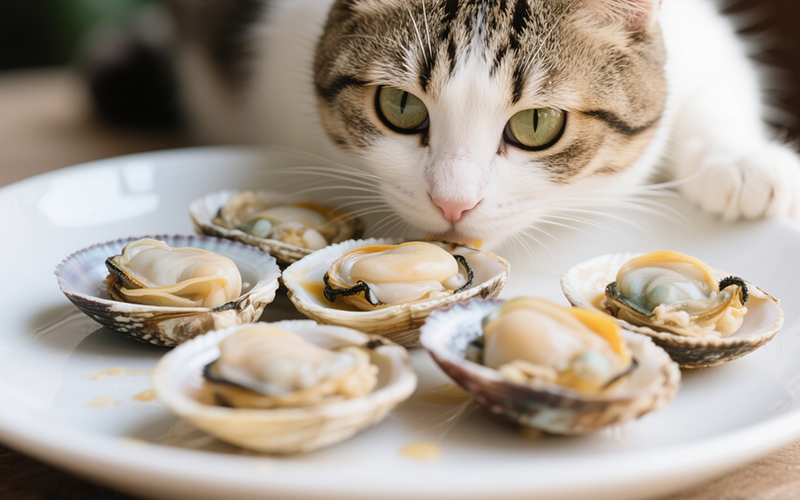
Seafood Surprise: Can Cats Eat Clams Safely? (Vet-Reviewed Risks & Guide)
- 15 Apr 2025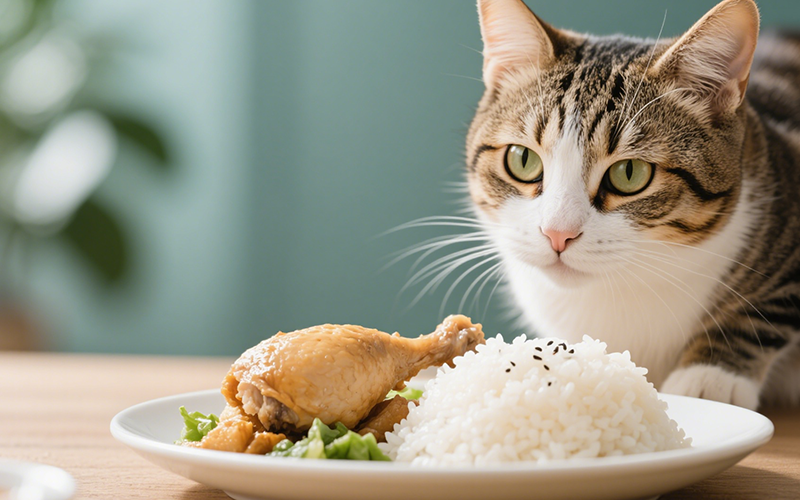
Chicken & Rice for Cats: Safe Treat or Dietary Danger? (Vet-Reviewed Guide)
- 15 Apr 2025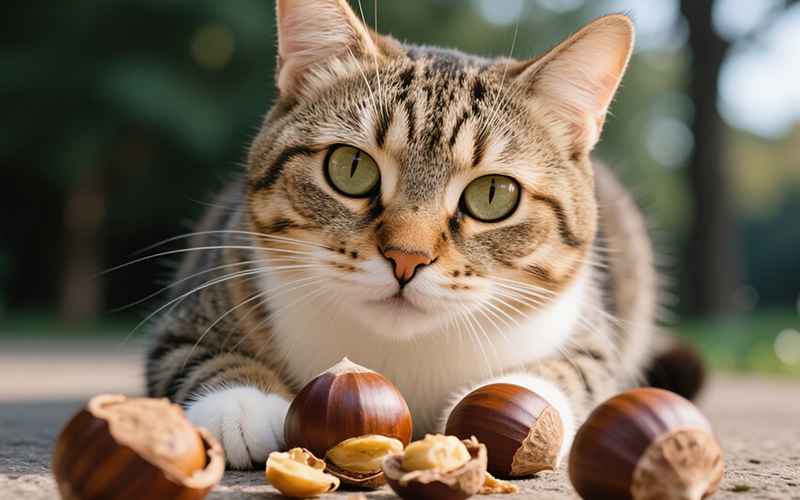
Nutty Concerns: Can Cats Eat Chestnuts Safely? Vet Explains the Risks (True vs. Horse Chestnuts)
- 15 Apr 2025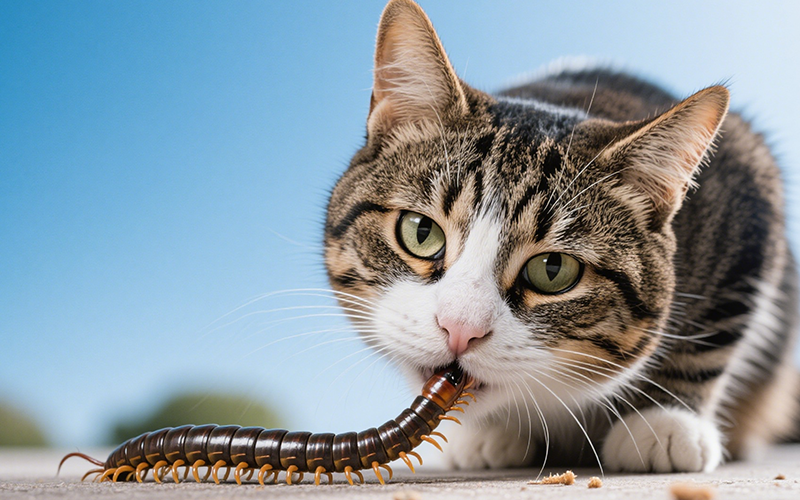
Creepy Crawly Cuisine? Can Cats Eat Centipedes Safely? (Vet-Reviewed Warning)
- 15 Apr 2025
The Gourd Guide: Can Cats Eat Canned Pumpkin Safely? Vet-Reviewed Benefits & Risks
- 15 Apr 2025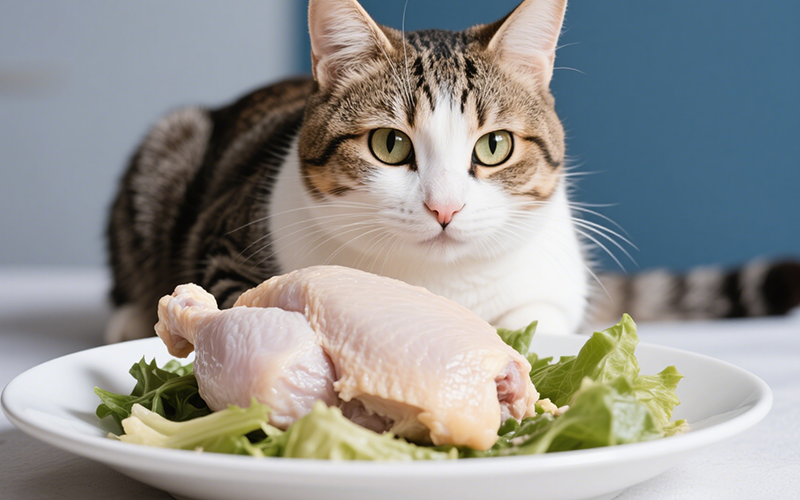
Boiled Chicken for Cats: A Purrfectly Safe Treat or Potential Pitfall? (Vet-Reviewed Guide)
- 15 Apr 2025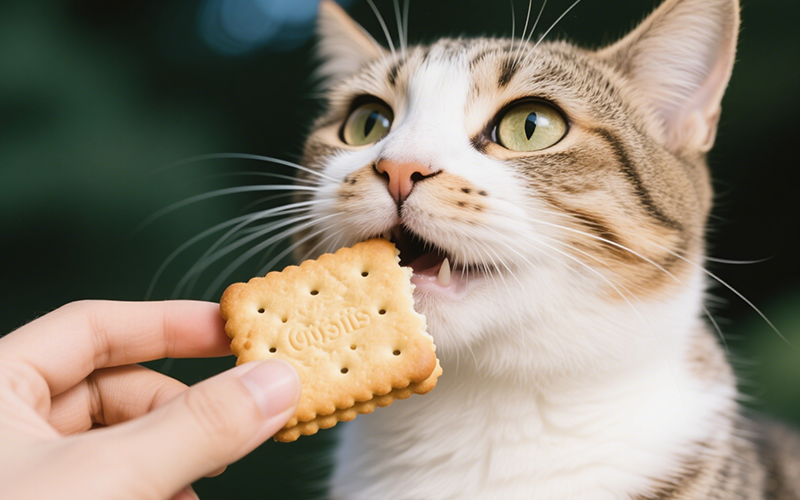
The Crumbly Truth: Can Cats Eat Biscuits Safely? Vet Warns of Hidden Dangers
- 15 Apr 2025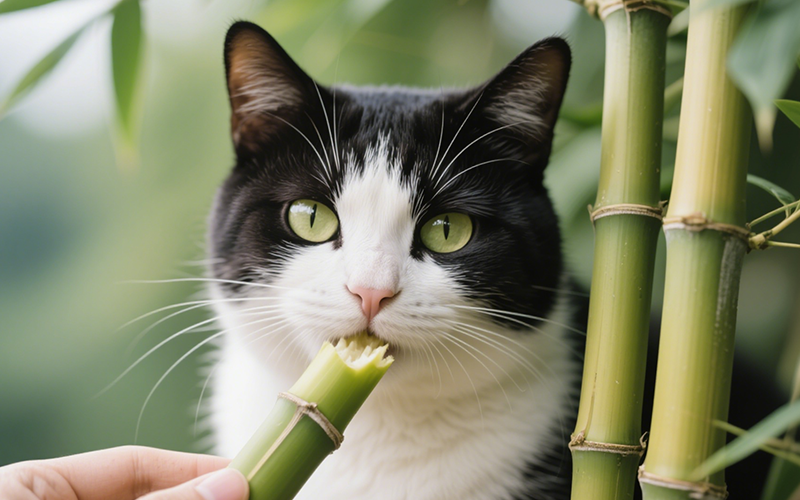
Green Stalks & Curious Cats: Can Cats Eat Bamboo Safely? (Vet-Reviewed Guide)
- 15 Apr 2025
Beef Liver for Cats: Nutrient Powerhouse or Risky Treat? (Vet-Reviewed Safety Guide)
- 15 Apr 2025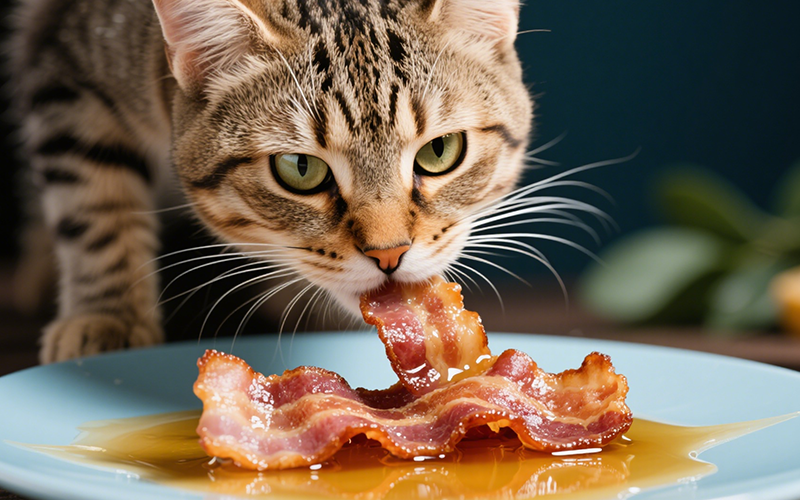
Fat Trap Alert: Can Cats Eat Bacon Grease Safely? (Vet-Reviewed Dangers)
- 15 Apr 2025
